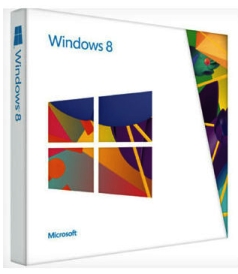Microsoft has reduced the number of Windows 8 editions it's selling. That makes the upgrade process easier than before. But there are still some things to be aware of. What follows applies even if you plan to stick with Windows 7. If your new PC comes with Windows 8, you can spend a little to secure downgrade rights that could save you a lot later.
Some scenarios:
(1) You’re planning to buy a new Windows 8 PC.
Choose your Windows 8 version carefully. Most new PCs are sold with the base Windows 8 edition. If you actually want Pro, this is the time to purchase an upgrade. If you want to use downgrade rights to replace Windows 8 with Windows 7, you need Windows 8 Pro anyway. You also need the Pro version to add Media Centre capabilities and/or to join a Windows domain.
Not all PCs include the option to upgrade to Windows 8 Pro, especially branded PCs such as some of the PCs at Dell’s Consumer site. No upgrade option is available. You have to go to the Business site to get that option, which currently costs $70.
(2) You have an existing desktop PC or notebook that came with Windows XP, Vista, or Windows 7 and was purchased before June 2, 2012.
You have 2 options:
•Wait until October 26 and order the Windows 8 Pro online upgrade from Microsoft for $40. Note that you can order the upgrade on a different PC than the one where you plan to install it. (You’ll need to use the option to create bootable installation media on a DVD or USB flash drive. You can order a backup DVD for another $15.)
•Purchase a boxed upgrade to Windows 8 Pro from a reseller like Newegg, Amazon, or Staples. The current discounted price in the US is $70, with some resellers offering slight discounts, free shipping, and so on.
(3) You have an existing desktop PC or notebook that came with Windows 7 and was purchased between June 2, 2012, and January 31, 2013.
Lucky you. You qualify for an upgrade to Windows 8 Pro for $14.99. Go to the Windows Upgrade Offer site to register.
(4) You want to install Windows 8 in a virtual machine on a Mac or PC.
A virtual machine is treated as if it were a new PC. See next question.
(5) You want to install Windows 8 on a new PC that you built or bought that did not include a Windows license.
You can preorder an OEM copy of Windows 8 that includes Personal Use Rights. Two weeks before the Windows 8 launch, those prices are around $100 for Windows 8 and $140 for Windows 8 Pro. However, wait until October 26 to see what price Microsoft offers on downloadable full licenses. During the promotional period the discount could be significant.
(6) You have a new Windows 8 PC and you want to add DVD playback capabilities and Media Centre software.
If it’s a new PC that came with the base edition of Windows 8, you need the Windows 8 Pro Pack (currently $70 or less from online retailers). This product uses the same technique as Windows 7 Anytime Upgrade to unlock the Pro features on your installed copy. You use the Add Features option to enter a new product key, which you can buy online or as a key card in retail packaging.
If you upgraded Windows 7 or Vista or XP to Windows 8 Pro, regardless of which method you used (online or boxed software), you qualify to add the Windows 8 Media Centre Pack for free.
(7) You want to downgrade to Windows 7.
If you purchased a new PC with Windows 8 Pro installed by the OEM, you can use your own Windows 7 media to install Windows 7 Professional. You’ll need to activate your copy over the phone using the product key from the sticker on the PC (intended for Windows 8).
If you bought a new PC that included the base edition of Windows 8, your only official downgrade path is to buy a retail copy of Windows 7 and install that.
NOTE: Upgrade copies of Windows 8 Pro do not include downgrade rights.
There - that wasn't so bad, was it?


No comments:
Post a Comment